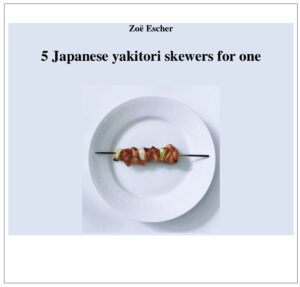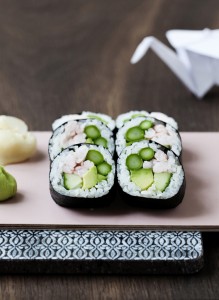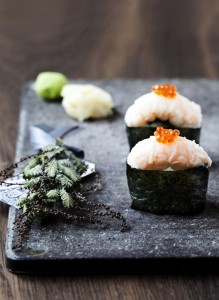
In Japan, yakitori skewers are a very popular dish.
In Japan, the classic yakitori skewer is made with chicken. It is not just the chicken meat that is used, the skin and offal such as the heart and liver are also used. It is prepared in such a way that it turns into delicate pieces that can be eaten in one mouthful.
In Japan, there are restaurants that specialize in making yakitori skewers. They not only use chicken meat. Pig, seafood and vegetables are also prepared in several different ways.
Yakitori skewers are also popular as take-away food. There are many Japanese who buy a selection of take-away dishes on the way home, which are just right to heat up at home.
Yakitori skewers are a dish that can be enjoyed all year round. In the mini ebook “5 Japanese yakitori skewers for one” you will learn that tasty barbecue skewers that can be enjoyed during week days and special occasions.
_
Zoë has lectured and held sushi courses for A. P. Moller – Maersk, Hugo Boss Nordic, Novo Nordisk, Novartis, Velux, Gorrissen Federspiel, Beierholm revision, Elbek & Vejrup and many more.







